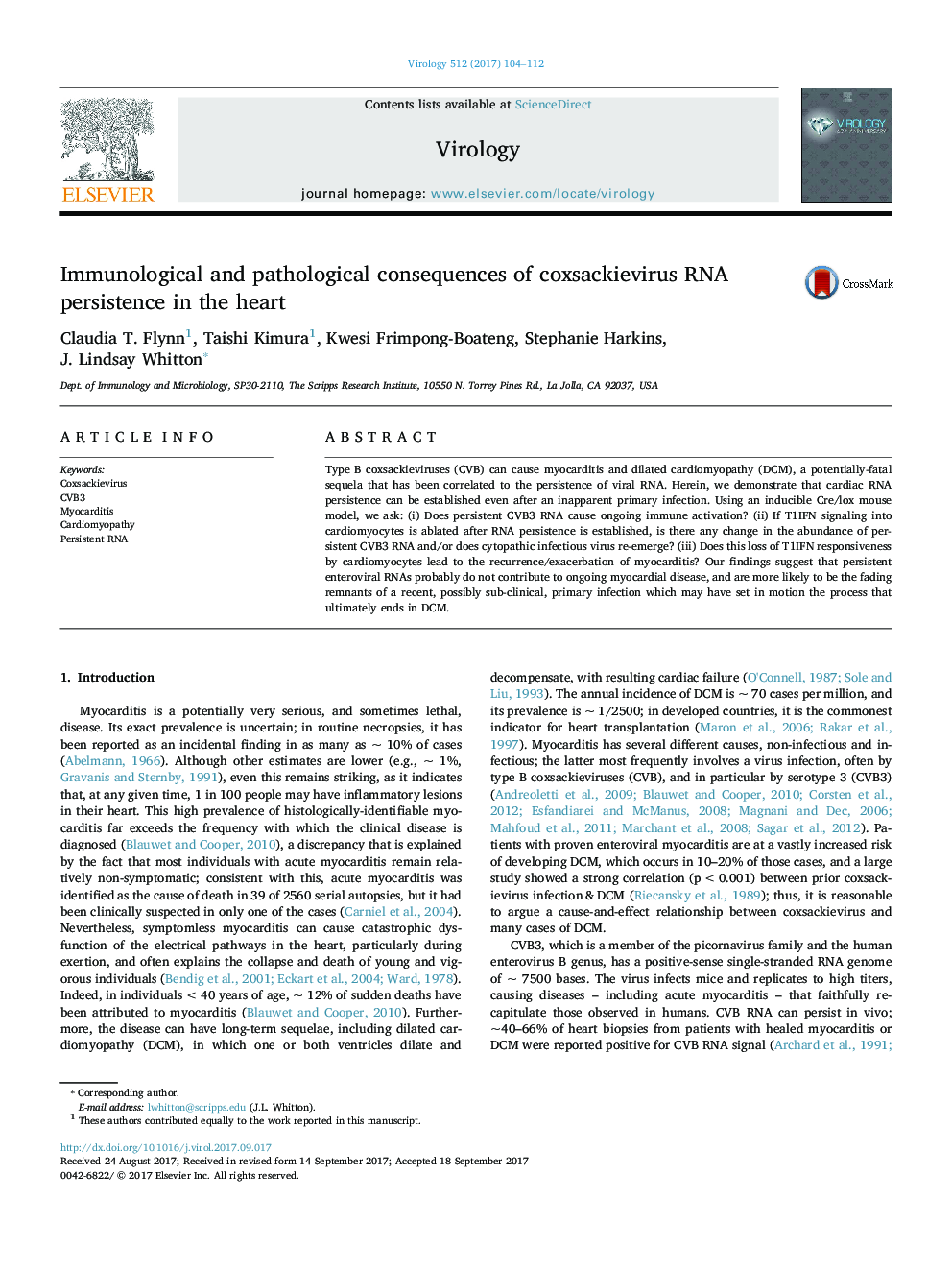| Article ID | Journal | Published Year | Pages | File Type |
|---|---|---|---|---|
| 5674864 | Virology | 2017 | 9 Pages |
Abstract
Type B coxsackieviruses (CVB) can cause myocarditis and dilated cardiomyopathy (DCM), a potentially-fatal sequela that has been correlated to the persistence of viral RNA. Herein, we demonstrate that cardiac RNA persistence can be established even after an inapparent primary infection. Using an inducible Cre/lox mouse model, we ask: (i) Does persistent CVB3 RNA cause ongoing immune activation? (ii) If T1IFN signaling into cardiomyocytes is ablated after RNA persistence is established, is there any change in the abundance of persistent CVB3 RNA and/or does cytopathic infectious virus re-emerge? (iii) Does this loss of T1IFN responsiveness by cardiomyocytes lead to the recurrence/exacerbation of myocarditis? Our findings suggest that persistent enteroviral RNAs probably do not contribute to ongoing myocardial disease, and are more likely to be the fading remnants of a recent, possibly sub-clinical, primary infection which may have set in motion the process that ultimately ends in DCM.
Related Topics
Life Sciences
Immunology and Microbiology
Virology
Authors
Claudia T. Flynn, Taishi Kimura, Kwesi Frimpong-Boateng, Stephanie Harkins, J. Lindsay Whitton,
